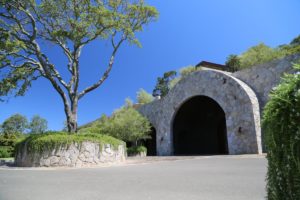
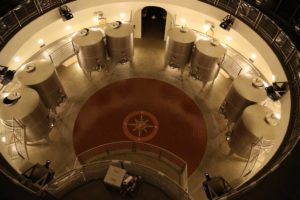
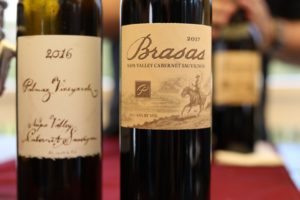 Palmaz Vineyards is located at the end of Hagen Road just north and east of the town of Napa. This winery is not open to the public and appointments are required well in advance. All tours and tastings are private for your party and are hosted by a Palmaz Ambassador or a Palmaz family member (upon request). Founders, Julio and Amalia Palmaz are originally from La Plata Argentina (about an hour from Buenos Aires); both are extremely involved in the daily winery operations as are their two children, Florencia and Christian. Christian is also President and CEO of Fremont, CA based Vactronix Scientific, a 3D printing materials science company serving primarily medical and aerospace industries.
Palmaz Vineyards is located at the end of Hagen Road just north and east of the town of Napa. This winery is not open to the public and appointments are required well in advance. All tours and tastings are private for your party and are hosted by a Palmaz Ambassador or a Palmaz family member (upon request). Founders, Julio and Amalia Palmaz are originally from La Plata Argentina (about an hour from Buenos Aires); both are extremely involved in the daily winery operations as are their two children, Florencia and Christian. Christian is also President and CEO of Fremont, CA based Vactronix Scientific, a 3D printing materials science company serving primarily medical and aerospace industries.
Before moving to the U.S., the Palmaz family had a long history of ranching in Argentina. When the family lived in Texas in the late 1980s through the 1990s, they founded High Gate Ranch near the tiny town of Bandera (about an hour drive from San Antonio). They raised grass fed Fallow Deer for the premium restaurant venison market. They developed that operation to over 14,000 head; at one time it was the largest Fallow Deer operation in the world.
Julio invented the Palmaz Coronary Stent and patented it in 1985, (used to treat narrowed or blocked coronary arteries) and has become a life changing procedure for millions over the years. Items relating to his research are housed in the Smithsonian (but are not currently available for viewing). The Julio Palmaz Papers (a collection of his research and published works) are available for viewing at the University of Texas Health Science Center at San Antonio.
He has founded several companies over the years including Advanced Bio Prosthetic Surfaces and Palmaz Scientific. He became familiar with Napa Valley while completing his medical residency at the nearby University of California Davis.
And early in her professional career, Amalia was president of her family-owned Buenos Aires based mining company, CRISTAMINE. Founded in 1961, this company began by supplying raw materials for the glass industry. Still in business, they mine a variety of raw materials from their own mines including calcium carbonate, several types of sand and feldspar among other products. Over the years they have evolved from producing products for only the glass industry to numerous other industries.
The Property
The total estate encompasses 600 acres of which 64 acres are planted to vines. Long time viticulturist Dick Steltzner oversaw the planting of their vineyard in 1996. Today Christian is in charge of their vineyard operating an in-house team of vineyard workers. Most of the estate is hillside with vineyards flowing down the sides of the Vaca mountains. The vineyards one sees when looking down from the winery are just a small portion of their total overall vineyard acreage. Much of their vineyards are planted higher and range from 300 feet at the lowest part of the property to the top of the hillsides to the east of the winery with elevations up to 1,400 feet. And this elevation makes a significant difference in growing conditions with temperatures varying considerably at times between their lowest and highest vineyards.
The winery itself sits right near Mt. George (in fact all three peaks of Mt. George are on their property) in the eastern part of the Coombsville region, a part of Napa Valley that generally sees a cooler growing climate due to its proximity to the San Pablo Bay in the south and the influences of the daily fog.
When the Palmaz’s purchased this land, not only did they purchase a prime location for growing grapes, but they also purchased a unique piece of Napa’s winery history as well as the accompanying stories associated with this property. This site used to be the home of Cedar Knoll Vineyard and Winery – originally founded by Henry Hagen and his brother Peter. The brothers were already in business together prior; they owned a cigar shop in San Francisco.
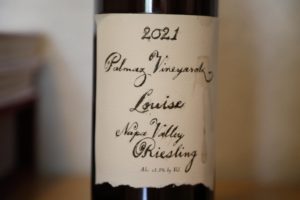
 Henry and Peter purchased an initial 70 acres from William Woodward in 1877 and changed the name from the Bill Woodward Whiskey Ranch to Cedar Knolls. Peter died at 42 years old of tuberculosis in 1880 and Henry then took over sole ownership of the property. Hagen Road is named in their honor. At one point Hagen owned more than 450 acres here and besides grapes had small ponds filled with carp, catfish and a special trout pond and maintained an orchard. An article dated January 12, 1894, from the Napa Register references bananas, citrus and other tropical fruits growing on the property. And a special part of the property was set aside as a ‘deer park’.
Henry and Peter purchased an initial 70 acres from William Woodward in 1877 and changed the name from the Bill Woodward Whiskey Ranch to Cedar Knolls. Peter died at 42 years old of tuberculosis in 1880 and Henry then took over sole ownership of the property. Hagen Road is named in their honor. At one point Hagen owned more than 450 acres here and besides grapes had small ponds filled with carp, catfish and a special trout pond and maintained an orchard. An article dated January 12, 1894, from the Napa Register references bananas, citrus and other tropical fruits growing on the property. And a special part of the property was set aside as a ‘deer park’.
Like numerous other winemakers in Napa Valley from this era, Henry was German; he was originally from Mannheim, Germany. Prior to starting Cedar Knoll, he already had winemaking experience working for his brother-in-law Charles Kohler at one of California’s earliest wineries Kohler & Frohling (founded in 1854 by California wine pioneers, Charles Kohler and John Fröhling who incidentally were also professional musicians). And Fröhling was also one of the founders of the city of Anaheim in Orange County.
Another individual, Joseph A. Mathos (Mathews) worked in the Bill Woodward’s cellar (until he sold to the Hagen’s) before leaving and starting his own winery in the city of Napa – called Lisbon Winery – named after his home city in Portugal. Remarkably this old stone building dating from 1882 still stands and is home to the Jarvis Conservatory (corner of Yount and Main streets, just north of downtown).
Cedar Knolls was a prominent producer in the 1880s (with a good portion of their wines sold through Kohler & Frohling). After Henry Hagen passed on in 1895, the winery continued to operate – run by some of his relatives. It was later sold to Ferdinand E. Hestal, an attorney and real estate broker from San Francisco. The property had mostly been abandoned by the time the Palmaz family acquired it. Prior the Palmaz’s purchasing the property, it had been on the market of a number of years because the real estate agent at the time was marketing it as having only 8 acres suitable for planting. Later original vineyard maps were discovered showing a much larger part of the property had originally been planted to vines.
The original Hagen home has since been restored. A neat discovery at the time of their purchase was Henry Hagen’s wine cellar below the home, where they found a number of old wine making tools, wine bottles and other wine related items. Like so many other wineries in the valley and beyond, this original winery was shut down due to Prohibition and this land was not used commercially for wine grapes until decades later. The original winery is one of the very few ‘ghost wineries’ in Coombsville – stone wineries quarried from nearby sites that predate Prohibition. Favia, also in Coombsville is one other example.
Robert Mondavi Visit
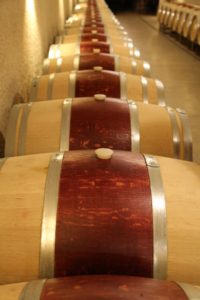
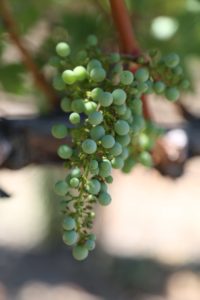 When Julio and Amalia first moved to Napa Valley – a few days after settling into the old house on the property they received an invitation from Robert and Margrit Mondavi to enjoy dinner at their home. Julio and Amalia thought this was an invitation to a party at the Mondavi’s home and therefore decided to arrive fashionably late as is often the case when you go to parties in the valley. Upon arriving at the Mondavi’s home, they quickly wondered why there were no cars of guests on site. They soon realized this was a private personal dinner invitation and there would be no other guests. They were late, but fortunately not to late!
When Julio and Amalia first moved to Napa Valley – a few days after settling into the old house on the property they received an invitation from Robert and Margrit Mondavi to enjoy dinner at their home. Julio and Amalia thought this was an invitation to a party at the Mondavi’s home and therefore decided to arrive fashionably late as is often the case when you go to parties in the valley. Upon arriving at the Mondavi’s home, they quickly wondered why there were no cars of guests on site. They soon realized this was a private personal dinner invitation and there would be no other guests. They were late, but fortunately not to late!
Both Robert and Margrit were intrigued and curious about their plans for the Hagen property. Once they heard about the ambitious plans Robert told Julio and Amalia that he must see the cave before he died. Sometime later the Palmaz’s received a call from Margrit indicating that Robert’s health was failing and that he would like to come by for a visit. The scheduled pouring of concrete in one of the levels was accelerated to accommodate his visit. They did not realize he wasn’t able to walk on his own at this time – so when he arrived, they wheeled him in onto the still recently curing concrete. As a result, his wheelchair left tracks which if you know where to look are still faintly visible today.
Thinking he just wanted a glimpse of part of their construction they invited him down to the house for lunch. He would have none of this insisting that he wanted to see every last inch of their construction. Christian remembers the family and employees lifting Robert and his wheelchair over piles of construction materials and moving from one level to another with the tour lasting considerable time!
Hospitality
Guests who drive will park in the small outdoor parking lot on the third level and walk up the flight of stairs to the fourth level and be greeted by one of the Palmaz ambassadors just outside the entrance to the cave. Although not as long as Mr. Mondavi’s tour, tours today typically last between 90 minutes and 2 hours. Private tours starts on the fourth floor; weather permitting guests will be accompanied outside and served a glass of Palmaz rosé while the Palmaz ambassador speaks about the Palmaz family history and the history of this property.
From the upper levels in the cave a side door leads to the stairwell; looking down at the levels here gives one a perspective of the impressive vertical reach of the cave. After entering the cave again, guests will take a short elevator ride to a lower level in the cave and begin the tour. The world’s largest underground reinforced structure is the fermentation dome which is 54 feet tall.
We have toured the winery a number of times and during one of our visits, Florencia Palmaz hosted the tour. She has a great sense of humor and her insights into the wine industry really help complement the tour.
Tastings are held in one of several small rooms within the cave winery (on the fourth floor); these are well decorated, intimate and elegant spaces. Seated tastings are hosted at long tables surrounded by stone arches. During tastings, guests will taste both of their white wines, a current vintage and an older vintage of their Cabernet Sauvignon and finish with a taste of the Muscat Canelli dessert wine.
All wines are paired with cheese and other tasty specially prepared hor d’oeuvres including delectable items such as truffles or as we had during our latest visit, smoked salmon with wasabi infused caviar and the delicious chilled diver scallop with Maradol papaya mousseline. And at least one of the bites will be a piece of Wagu beef from the Palmaz family owned Genesee Valley Ranch; for reference, see our detailed notes about this ranch towards the end of this review.
Cave/Winemaking
When drilling a cave this size you are bound to hit something of interest underground and in this case, they actually hit gold in the rock at one point. While not concentrated enough to mine commercially this is the first time, we have heard of any cave in Napa Valley actually hitting natural gold underground. The winery excavation and construction took about 7 years to complete from approximately 2000 through 2007. The drilling was overseen Glen Ragsdale of Ragsdale Tunneling Inc, with the lead geotechnical engineer, Graham Wozencroft.
Arguably the highlight of a visit to the winery is the awe-inspiring nearly 110,000 square-foot cave system. To our knowledge this is at least 2x the size of the next largest winery cave in Napa Valley and is the largest man-made winery cave in California. For reference, the other largest winery caves in Napa Valley are the following: Jarvis (45,000 square feet) Rutherford Hill (41,000 square feet), Far Niente (40,000 square feet), Stag’s Leap Wine Cellars (38,000 square feet), Inglenook (38,000 square feet), Antinori (35,000 square feet), Schramsberg (34,000 square feet) and Pine Ridge (32,000 square feet).
All of Napa Valley’s largest wine caves are completely dwarfed in comparison to other massive wine related caves on the planet. We have personally visited the Gibralter Wine Vault, a significant undertaking in the early 2020s which converted parts of 2.6 square miles of caves, drilled by Royal Engineers prior to the Second World War for wine storage. And we have also visited the largest two winery caves in the world, Milestii Mici Winery with its 200km of tunnels and Cricova with only 120km of wine cellar tunnels. Both of these wineries are located in the country of Moldova.
- One million bottles of sparkling wine are stored at Cricova Winery, Moldova
- The vast tunnels underground of Milestii Mici Winery, Moldova
- Wine racks under construction, Gibraltar Wine Vault
The Palmaz cave was carefully designed for their specific property; it helps to think of the winery as 24 micro-wineries representing 24 parts of their vineyard. The grapes from each vineyard block is vinified separately from their other vineyard blocks and only after its aging is complete are the wines blended together. What is fairly unique is each barrel sees the same wine throughout the entire aging process. Rather than racking wine from multiple barrels into large stainless-steel tanks and then refilling up the barrels or racking to different barrels – each barrel is racked to a stainless-steel carboy, the barrel is cleaned, and this same wine goes back into the same barrel.
Processing grapes here is all about handling the grapes as gently as possible; gravity flow wine making is a big part of the operations here. Even filtering is gravity flow with the wine flowing through hoses between levels through the actual filters prior to bottling.
The Palmaz’s have borrowed several pieces of equipment from other industries to use in their own wine making. They even designed their own 6 axis shaker table to catch grapes with jacks still attached (the little stem that connects to the grape to the vine). During harvest it is quite impressive to see the attention to detail that the same workers who harvested the grapes show at this table – only allowing the best of the fruit to pass through to fermentation. And in 2018 Palmaz added an optical sorter to their cellar operations.
The cave encompasses five primary levels including the massive fermentation dome located approximately in the center. Picture a wagon wheel; the spokes of the wheel are the caves that extend out in all directions from this main room. The five levels are equivalent to the height of an 18-story building.
A viewpoint overlooks the circular fermentation dome which contains a number of stainless-steel tanks. From a touch screen console located here one can easily control many aspects of each tank including their rotation (they sit on a custom-made belt system). When ready to deliver grapes post sorting, the tanks are rotated so they are located directly below a hopper; the grapes are then gravity fed to that particular tank. Each of these tanks is “online”; the tank temperatures are controlled merely by changing settings via the touch-screen console.
After this control system was installed, Christian helped create the first ever proprietary algorithmic fermentation control system, called F.I.L.C.S, or simply called Felix. FILCS is an acronym for: Fermentation Intelligence Logic Control System. This system is truly remarkable and has helped revolutionize how they collect and manage data from each harvest. Sensors are built into each tank which provides huge amounts of information ranging from temperature at various points throughout each tank, how fast fermentation occurs in each tank, amount of coolant being used in each tank and numerous other data points. It is very impressive to see the various data displayed on the walls of their fermentation dome. And the images are projected by state-of-the-art Christie projectors.
Other cave features include a huge wine elevator for transporting the large tanks between cavern levels, as well as the winery’s own water treatment plant; no water goes to waste here. One tunnel on level one stores up to 1.2 million gallons of water; the ornamentals and other shrubbery on the grounds are watered entirely with this recycled water. Palmaz was California’s first net-zero emissions winery.
Also look for a rectangular part of the cave that was not covered over on one of the levels – leaving the original underground rock exposed. This was left unfinished on purpose. Julio used to paint as a child – often replicating the work of other masters, using postcards for his inspiration. When he finished a painting he would leave a corner of the canvas empty, signifying his painting was not the original artwork.
Select Wines
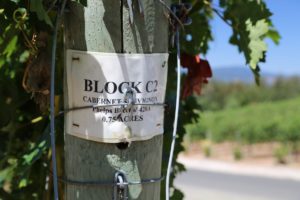
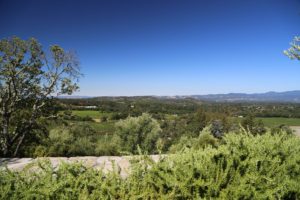 Their first winemaker was Randy Dunn who also offered assistance with the design of the winery. The first two vintages of Palmaz wines were in fact produced at Dunn Vineyards. Mia Klein is their long time consulting winemaker. The first vintage of Palmaz was in 2001. Today several labels are produced including Palmaz, Brasas (for club members) and Cedar Knoll.
Their first winemaker was Randy Dunn who also offered assistance with the design of the winery. The first two vintages of Palmaz wines were in fact produced at Dunn Vineyards. Mia Klein is their long time consulting winemaker. The first vintage of Palmaz was in 2001. Today several labels are produced including Palmaz, Brasas (for club members) and Cedar Knoll.
Their fun room or as as the family commonly refers to, “the girl’s room” contains all their white wines. This is a separate room in the cave devoted entirely to white varieties. While Palmaz has focused their attention on making Cabernet Sauvignon they also make several white wines including a dry Riesling (which tends to sell out rather quickly), Chardonnay and a delicious dessert wine, Muscat Canelli “Florencia”.
Whites
Palmaz produces an extremely limited multi varietal rose dominated by Cabernet Sauvignon. The 2023 Palmaz Rose is a blend of 67.21% Cabernet Sauvignon, 16.36% Grenache, 6.66% Malbec, 3.68% Cabernet Franc, 3.50% Merlot and 2.59% Petit Verdot. The resulting juice from all the varieties in this blend except the Grenache was created by bleeding off juice (saigne). The juice from the Grenache grapes was the result of being put direct to press. With such a limited planting of Grenache, its grapes are always used for this wine. This bottling is know for its consistent pink bubble gum color. The delicate but aromatic bouquet offers scents of strawberry, watermelon, citrus and a note which reminded us of the smell of opening baseball card packs in our youth and the resulting smell of the included dry Wrigley stick of gum. The palate offers flavors of cotton candy and wild strawberry. This would pair nicely with a warm day and a fresh spring garden salad.
The 2021 Palmaz Vineyards Louise Riesling is medium gold in color; the bouquet is sweetly fruited with aromas of honeysuckle, honeycomb, pineapple, and guava. This wine features a fleshy but supple texture. The palate offers a variety of orchard fruit flavors including nectarine, peach and apricot accompanied by ripe Golden Delicious apple and mandarin orange. Finishes lightly sweet with some minerally notes. This subtle sweetness is complemented perfectly by its acidity. Spicy Thai food please. This bottling is off-dry with 0.91% residual sugar, a number that is right around our personal threshold for noticing sweetness in a wine. Its namesake is Christian’s wife Jessica Louise.
The family are not fans of big, oaky and buttery Chardonnays. Rather their Chardonnay is made in a Burgundian style with very cold and slow fermentation as well as aging taking place in oak sur lie. As a result, this wine always has a noticeable textural weight regardless of vintage but is never overly viscous in its textural feel. A separate wing of the cave is dedicated to white wines where the temperature is carefully controlled during fermentation, usually in the low 40s Fahrenheit.
The 2019 Palmaz Vineyards Amalia Chardonnay is deep gold in color; the bouquet is rich with both fruit and toasted oak/nutty characters including hazelnut. It offers scents of apricot, peach, nectarines and melting butter. The palate is bright and balanced and somewhat mirrors the bouquet with flavors of apricot, peach, yellow nectarine, pineapple and notes of caramel. It’s texture is like running one’s hand over a cashmere sweater. Supple, creamy and rounded. The finish is bright and loaded with lasting flavor. This wine was 100% barrel fermented aged sur-lie for 7 months in 70% new French oak barrels prior to bottling.
The Palmaz wines focus on balance and a textural softness (like velvet) on the palate; delicate and well-integrated tannins are one of the Palmaz hallmarks. As is their judicious use of oak.
Reds
Their flagship wine is Cabernet Sauvignon, and each vintage is generally blended with small amounts of one or two other Bordeaux red varieties.
The 2019 Palmaz Vineyards Cabernet Sauvignon is a blend of 94.23% Cabernet Sauvignon, 5.18% Cabernet Franc and 0.59% Petit Verdot. It was aged for 20 months in 94% new French oak. It is deep ruby in color; the beautiful aromatics provide sweet tobacco spice, ripe plum, dark cherry and boysenberry preserve. Additional layers include dark chocolate and espresso. Of the three vintages between 2017 and 2019 this wine is the most fruit forward. The palate offers flavors of blackberry, boysenberry and dark cherry with assorted darker baking spice aromas including nutmeg, cinnamon and clove. Its texture is a hallmark characteristic featuring highly polished and supple tannins. The finish lingers with a very subtle drying character. This wine is easy and comfortably drinking 5 years post vintage at the time of our tasting.

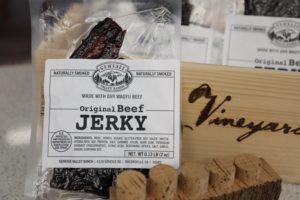 The 2018 Palmaz Vineyards Cabernet Sauvignon is 95.81% Cabernet Sauvignon and 4.19% Cabernet Franc. It was aged for 20 months in 92% new French oak barrels. This wine is deep ruby and nearly opaque; the distinctive bouquet sports herbal aromas of dried tobacco leaf, dried herbs including sage, red chili spices, light jalapeno pepper and dark pepper. Dark and savory, the palate offers flavors of plum, bramble, cherry and blackberry with an earthy character that lingers on the finish with a note of crushed pink peppercorn, bay leaf and smoked sage. The tannins are lightly grainy while showcasing the comfortable ‘Palmaz texture’, and despite a year older than the 2019, it’s grip is more pronounced.
The 2018 Palmaz Vineyards Cabernet Sauvignon is 95.81% Cabernet Sauvignon and 4.19% Cabernet Franc. It was aged for 20 months in 92% new French oak barrels. This wine is deep ruby and nearly opaque; the distinctive bouquet sports herbal aromas of dried tobacco leaf, dried herbs including sage, red chili spices, light jalapeno pepper and dark pepper. Dark and savory, the palate offers flavors of plum, bramble, cherry and blackberry with an earthy character that lingers on the finish with a note of crushed pink peppercorn, bay leaf and smoked sage. The tannins are lightly grainy while showcasing the comfortable ‘Palmaz texture’, and despite a year older than the 2019, it’s grip is more pronounced.
The 2017 Palmaz Vineyards Cabernet Sauvignon is deep ruby and opaque; the brooding bouquet offers darker aromas including forest floor, damp potting soil, and a light woodsy spice. Its core is darkly fruited with scents of blackberry, boysenberry, dark cherry and plum along with dark chocolate. The palate offers flavors of blackberry and dark plum. Despite 7 years post vintage at the time of our tasting, this wine still offers a firm and long lasting textural grip with a persistent drying character. Juicy and mouth watering, savory and dark, it lingers with a note of toasted cedar and dried sage. This bottling is built to age and has years ahead of it still with the proper cellaring.
The 2013 Palmaz Vineyards Cabernet Sauvignon is deep ruby and opaque; 11 years post vintage, this wine shows some bottle bouquet including dried cherry, accompanied by a woodsy spice of old cedar box, blackberry and dark plum. Opens further to notes of mocha and cocoa powder. Savory is an appropriate descriptor when initially announcing the characteristics of this bouquet. The tannins still show youthful, representing the quintessential structural character of this particular vintage in Napa Valley. The finish is firmly gripping with a gravelly and pixelated feel, a persistent dusty quality and a final burst of dried tobacco leaf. Brightly lit with energetic acidity. This is a serious wine that has loads of life ahead of it still.
The 2002 Palmaz Cabernet Sauvignon is aging quite well showing notes of tobacco and leather along with rich blackberry aromas. Rich, ripe and intensely flavored fruit shows on the palate accompanied by a diversity of baking spices; the fruit is holding up very well and this wine should continue to age and evolve for years to come. For reference we tried this wine 8 years post vintage.
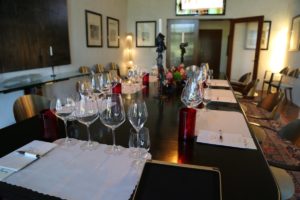 The “Gaston” Cabernet Sauvignon is a special wine and is made in very limited quantities, only during years where they feel the quality is worthy of releasing. As a result, this wine has not been made a number of years. It is produced after numerous lots are tasted blind; the top choices are separated from the rest and then blended prior to bottling. Its namesake is from Christian’s middle name.
The “Gaston” Cabernet Sauvignon is a special wine and is made in very limited quantities, only during years where they feel the quality is worthy of releasing. As a result, this wine has not been made a number of years. It is produced after numerous lots are tasted blind; the top choices are separated from the rest and then blended prior to bottling. Its namesake is from Christian’s middle name.
The 2017 Palmaz Vineyards Gaston is deep ruby; the bouquet is dark and savory offers aromas of dried herbs including sage, a hint of bay leaf, bramble, pipe tobacco, a woodsy spice, roasted coffee beans and dark plum. The palate is both red and dark fruited with flavors of dark plum and blackberry. The savory finish features notes of dried herbs and a toasted oak. This is clearly a wine with some gravitas; it is both a robust, yet also a balanced bottling. It has complexity with layers of both flavor and texture. It finishes juicy with grainy tannins and flavor paralleling each other on the extended finish. It shows exceptionally youthful still.
The 2018 cedar Knoll Cabernet Sauvignon is dark ruby in color. The bouquet is about the fruit rather than any prominent oak influence; it shows bright aromatics of plum, red cherry and some subtle darker baking spices as the wine evolves in the glass. This wine offers darker fruit (plum) across the palate with a simultaneous bright acidity. It lingers gently with finally tuned tannins and a hint of dried tobacco leaf. This is a very food friendly bottling but is also highly enjoyable just by itself.
Dessert
We have enjoyed several vintages of their Muscat Canelli dessert wine over the years. Not to be outdone by her brother, this wine is named after Florencia.
The 2019 Palmaz Vineyards Florencia Muscat Canelli is medium straw in color; the bouquet is highly floral including star jasmine, orchard fruit blossoms, with herbal nuances including lemongrass and juniper berry. Intensely flavored including of white nectarines, white peaches, comise pear, lychee, and honey crisp apple. It drinks really well with still plenty of age ahead of this beauty. Noticeably sweet but the residual sugar is balanced nicely by its bright acidity. Long fruit filled finish. Spicy food pairings, perhaps the stir fried Thai pad prik king food. Its residual sugar is 4.6%.
The 2007 Palmaz Florencia Muscat Cannelli is a lighter style wine that is not high in alcohol or in residual sugar. Rather it is very clean and crisp and best served chilled. This is a very refreshing wine – especially on a warm summer day, poolside. It features layers of floral aromas with notes of honeysuckle and mineralities on the palate.
Genesee Valley Ranch + Genesee Store
After Palmaz Vineyards was established, Christian wanted to return to his family ranching roots and began to search for land in California. In 2016, the Palmaz family purchased the historic Genesee Valley Ranch (GVR) in Plumas County. It is a very special part of the state based on its remoteness, history, water rights, sizable contiguous acreage, rivers and native/natural grasslands. The approximately 1,600 ranch and small town was founded in 1862 by Edwin D. Hosselkus and was owned and operated by four generations of this family before later being owned by a number of others. Hosselkus built the store and developed the ranch to serve area gold miners.
Christian sent us the following in regard to their decision to raise 100% purebred Black Wagyu beef.
We decided to tackle the American Beef concept feeling that America was ready for a better option than what was currently available in craft luxury. In the U.S. you belly up the butcher counter to find a relatively small selection of steaks which most people are accustomed to purchase several of the same cut such as a New York or Rib Eye without realizing where that beef is coming from or how many come from one animal. Contrasting with Argentina where my family is from, beef is consumed very differently. The typical weekend “Asado” celebrates the entire animal, and you typically bring home multiple unique cuts and build a multicourse BBQ that can feed an entire party. In the U.S. a single cow directly feeds far fewer people than it does in Argentina, for example, and requires a lot more processing to do so.
We wanted people to be able to be able to know the beef they are consuming in the same way they buy wines. By raising a heard from a single ranch/estate allowed our customers to discover the terroir and incredible team behind the operation. In order to achieve the prime plus marbling customers come to expect from pure bred Wagyu with all the health benefits of 100% grass fed, we needed a very unique and plentiful diversified grass program. GVR was the only property we felt that could deliver the consistency and quality year over year. It’s a very unique ranching property and program.
The name Genesse pays homage to Genesee, Hosselkus’s hometown in New York; this is not the only town in Plumas County to be named after a town in another state (reference LaPorte). In addition to the ranch, the Palmaz’s own the Genesee Store which dates to 1880. Before opening this as a restaurant the building was remodeled and raised, overseen by the Palmaz family. Its previous use was as a sandwich shop; one employee who grew up in the area remembers working in this old building serving sandwiches. She recalls the two original glass windows in the front of the store never used to open but after the building was raised the windows worked perfectly. The gorgeous original Hosselkus family home is located directly across the street from the Genesee Store (it was also restored by the Palmaz family).
Today along with being a restaurant (seasonal operating days and hours), visitors can buy select products including beef, locally grown vegetables, beer and local herbs. And it is also a space that sells a variety of used books (through a partnership with a Sonoma County, California based used books company) with a wide diversity of topics. The store and nearby buildings are surrounded by Genesee Valley Ranch on both sides of the highway. Worth a short walk to see on the east of the store are several old ranch buildings.
It is rare to discover a fine dining establishment in the ‘middle of nowhere’; the Genesee Store is a pleasant surprise. The dining space inside is small and features only several tables; an outdoor patio offers additional seating, weather permitting. As a result of their limited seating, reservations are required. The wine list is small but features premium wines from both Napa Valley and beyond including as expected several bottlings of Palmaz and Cedar Knoll. Genesee Store does not have a liquor license, so all their cocktails are made with wine. Guests who prefer cocktails will be pleasantly surprised to find a number of enticing options including the highly recommended Genesee Old Fashioned with a base of Port wine.
Known for their beef one can order several dishes including the Zabuton steak (Wagu beef) or those looking to go all out and splurge for 3-4 people can order the GVR Tomahawk. Hamburgers are also available. And a tasty dish we highly recommend is Gee’s Ramen, named in honor of Gee Pond Joe, the first cook for the store in 1880.
Despite its isolated location, Genesee Store has built its business on word-of-mouth referrals and as Christian told us, “An enthusiastic social media following.” Its customers come from all over California and Nevada. Locals have also discovered its cuisine (this was clearly evident during our dinner) and has become especially popular for date nights and or marriage proposals.
We have spent plenty of time in this part of the state looking for gold (one of our hobbies) and it is always a treat to visit Plumas County, a place that is far removed from city life, crowds and traffic. The air is clean and smells fresh although it wasn’t so for several months in 2021 when a large part of Plumas County was burned in what was the largest ever recorded single source fire in California’s history, the Dixie Fire. This nearly 1-million-acre fire also affected Genesee Valley Ranch, causing significant damage to the property including fences, irrigation systems, and other critical infrastructure. Fortunately, the cattle were safe through vigilant efforts of the ranch staff moving them at critical times during the fire to safe parts of the ranch.
A very rare offering for a Napa Valley based winery is a ranch club membership, similar to wine clubs their offerings provide access a variety of different size and shipments of Wagyu Beef each year. Genesee Valley Ranch offers three membership options ranging from 2 to 6 box shipments each year. The only other similar such membership program we know offered by a Napa Valley winery is Bluford Cellars from their family ranch in Honey Lake Valley, about a 2-hour drive from Genesee.
Select packaged steaks, ground hamburger and beef jerky are available at both the store and at Palmaz Vineyards. For more information visit: www.geneseevalleyranch.com and www.geneseestore.com
Genesee Valley Ranch
Genesee Store + Genesee
GoodHeart Brand Specialty Foods Co
In 1996 Amalia and Florencia founded this San Antonio based, prepared meat based products company. Today the company distributes its products to retail stores and supermarkets around the country. Unlike many prepared foods, their meats are minimally processed – prepared by hand and all are fully cooked ready for consumption upon purchase.
All their meats are high-pressure pasteurized, and vacuum sealed at their production facility on the outskirts of San Antonio, Texas. WE plan to visit their operations and once we do so, we will update our notes and photography here. For more details, visit: www.goodheart.com
—
Palmaz offers several memorable events throughout the year for members and Palmaz enthusiasts, including The Family Table every Friday from May through October, featuring a five-course food and wine pairing including library wines, The Big Pan, a midsummer tradition with plenty of food, wine and live music and The Asado an epic meat fest held every fall.
For a winery of this physical size and the number of planted vineyards they could be producing significantly more wine; however, the production is currently only around nine thousand cases each year. For more information, to join one of the four membership tiers in their Brasas wine club, to schedule a tour or to purchase wine, visit: www.palmazvineyards.com.
Exterior
Interior

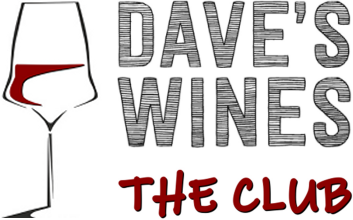




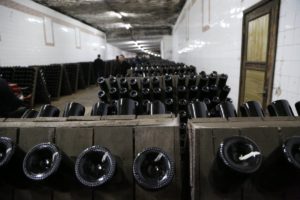
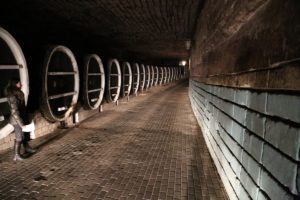
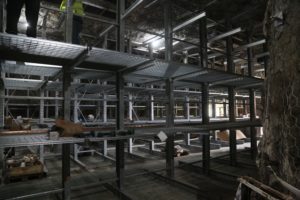
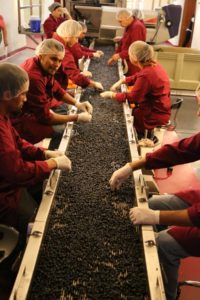
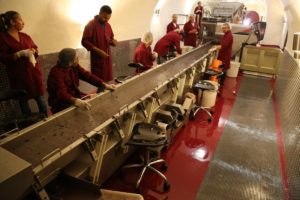
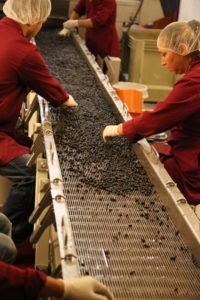
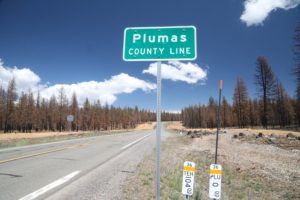
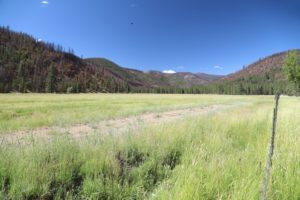
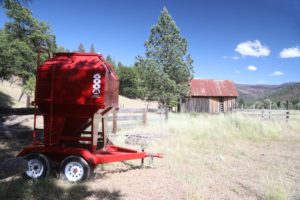
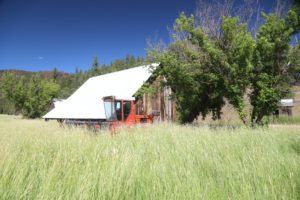
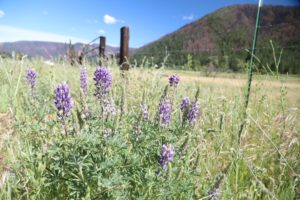
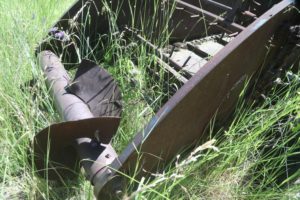
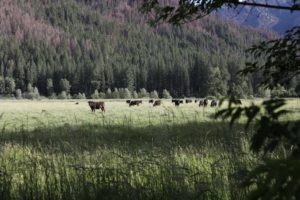
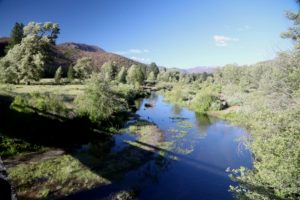
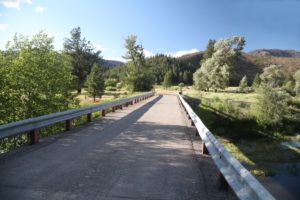
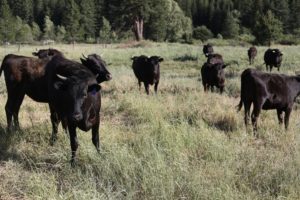
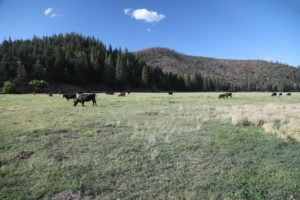
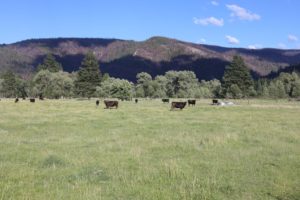
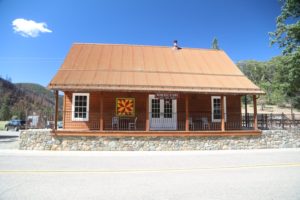
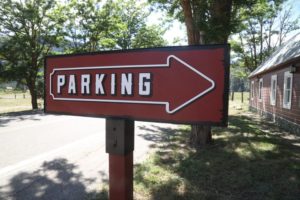
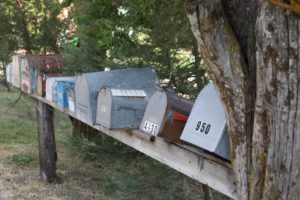
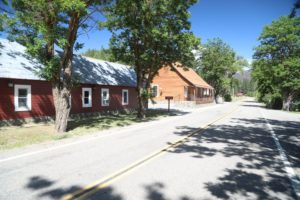
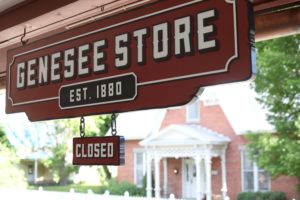
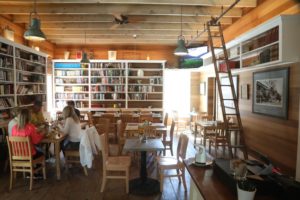
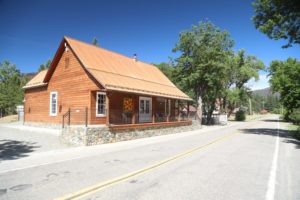
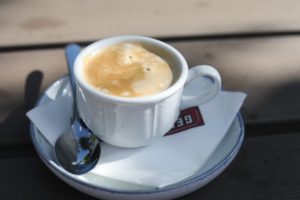

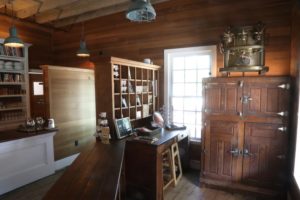
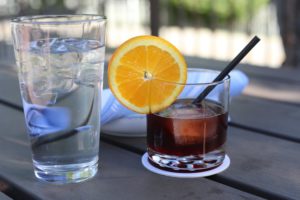
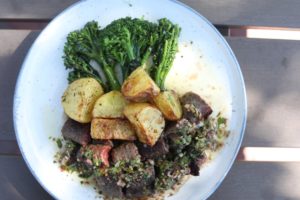

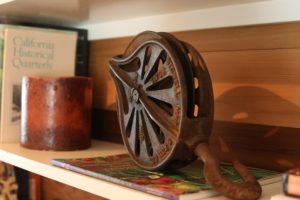
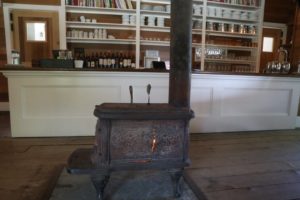
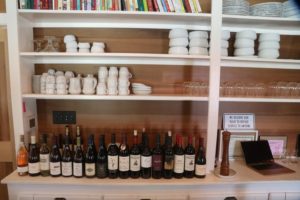
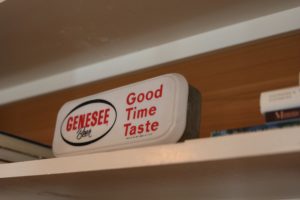

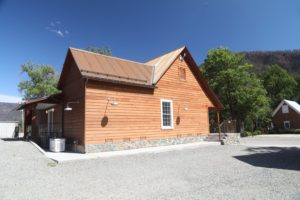
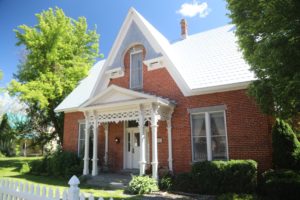
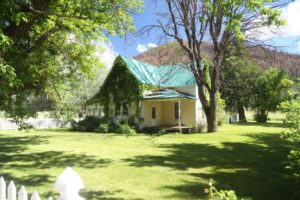
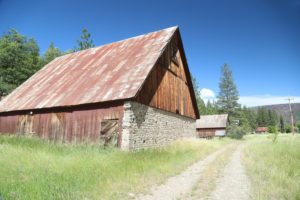
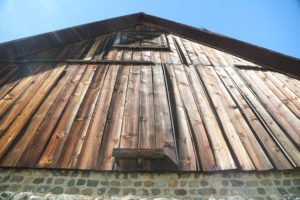
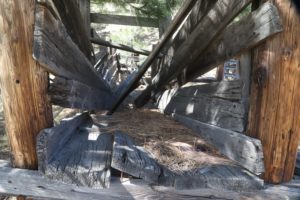
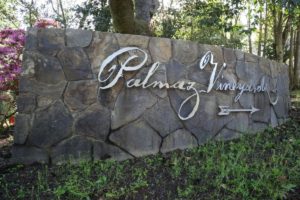
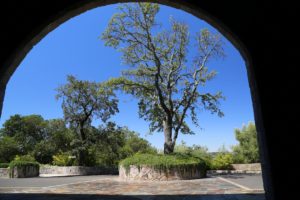
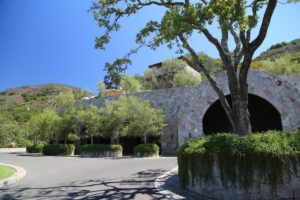
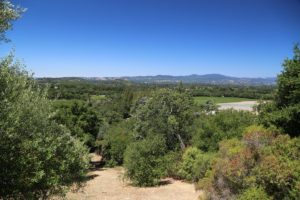
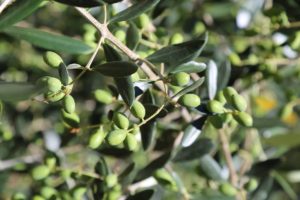
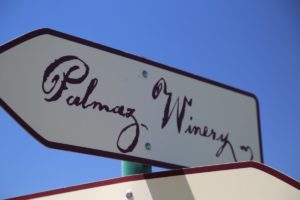

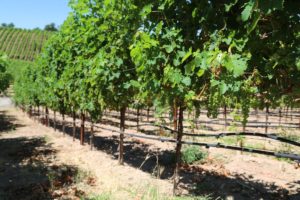
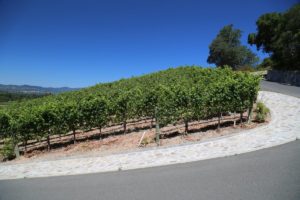
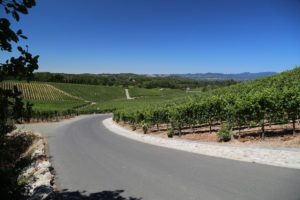
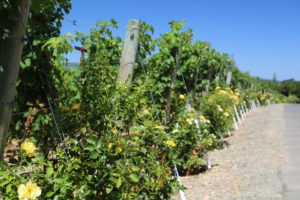
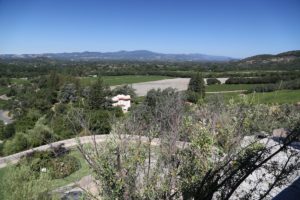
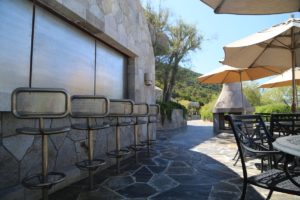
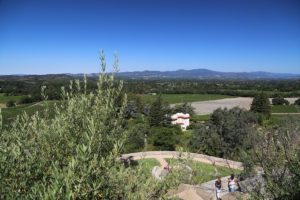
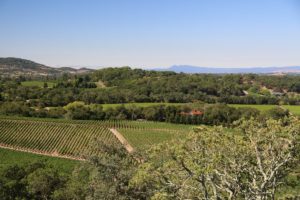
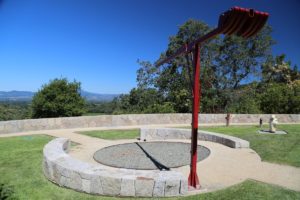
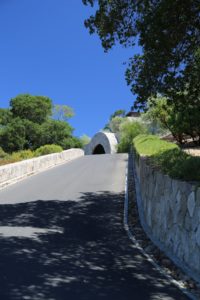
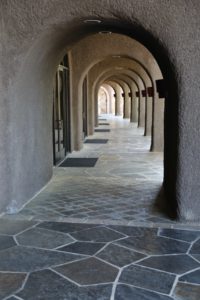
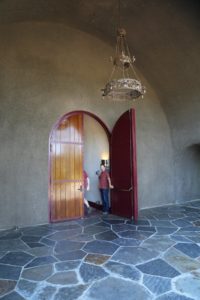

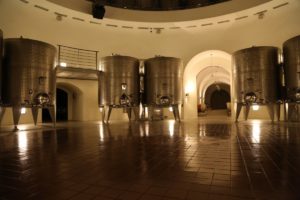
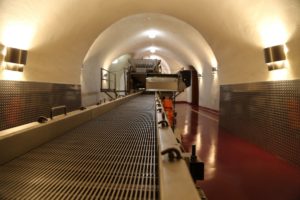
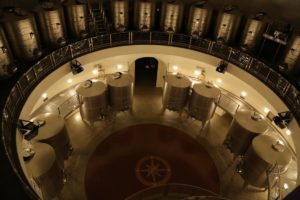
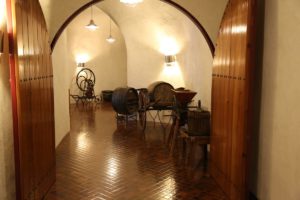
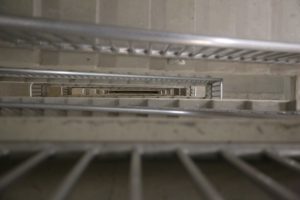
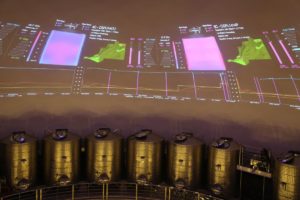
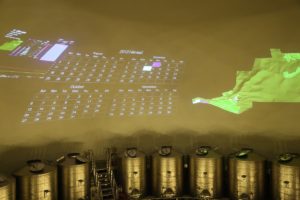
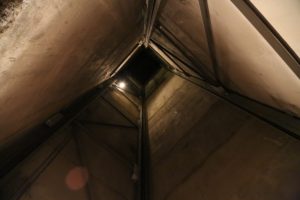
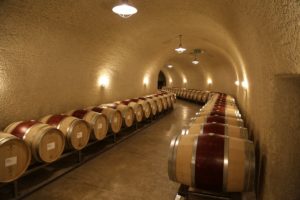

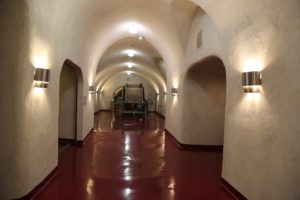

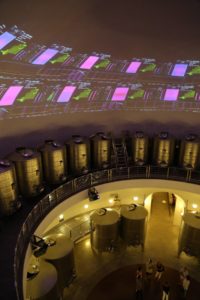
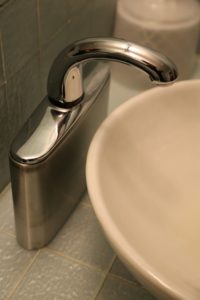
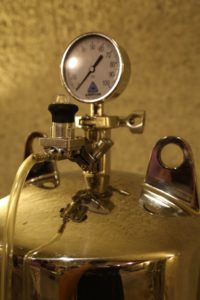

Do you have distributor in Colorado?
Lido – I’m sure they do, you will want to contact Palmaz directly.